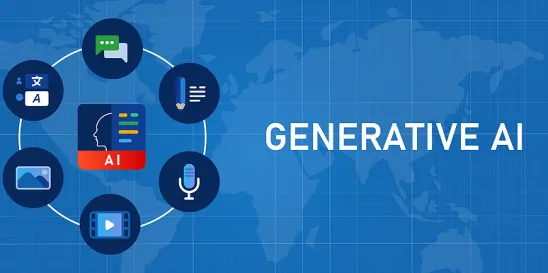The rapid growth of generative AI (GAI) has taken the world by storm. The uses of GAI are many as are the legal issues. If your employees are using GAI, they may be subjecting your company to many unwanted and potentially unnecessary legal issues. Some companies are just saying no to employee use of AI. That is reminiscent of how some companies “managed” open source software use by employees years ago. Banning use of valuable technology is a “safer” approach, but prevents a company from obtaining the many benefits of that technology. For many of the GAI-related legal issues, there are ways to manage the legal risks by developing a thoughtful policy on employee use of GAI.
One issue with generative AI is the risk that the output you receive infringes third party IP that may have been used to train the AI model. Lawsuits already have been filed against some GAI tool providers. Some allege the AI models are trained using copyright protected content and that certain outputs infringe for copying or being an unauthorized derivative of that content. If the output infringes, the tool provider and/or user may be liable. Some of the GAI tool terms of use (TOU) purport to shift liability to the user and some further require the user to indemnify the provider.
A growing number of responsible providers of AI tools are indemnifying users. One of the most recent announcements comes from Microsoft. The announcement notes:
- Some customers are concerned about the risk of IP infringement claims if they use the output produced by generative AI. This is understandable, given recent public inquiries by authors and artists regarding how their own work is being used with AI models and services.
- To address this customer concern, Microsoft is announcing its Copilot Copyright Commitment. As customers ask whether they can use Microsoft’s Copilot services and the output they generate without worrying about copyright claims, we are providing a straightforward answer: yes, you can, and if you are challenged on copyright grounds, we will assume responsibility for the potential legal risks involved.
- Specifically, if a third party sues a commercial customer for copyright infringement for using Microsoft’s Copilots or the output they generate, we will defend the customer and pay any adverse judgments or settlements that result from the lawsuit, as long as the customer used the guardrails and content filters we have built into our products.
This is just one of the many issues that need to be considered in developing a GAI policy. Often, companies are adopting policies that include approval/disapproval of specific GAI tools based in part on the terms of use (TOU). Including an indemnification is one of the important issues to consider in such approval. Surprisingly, in some cases the user indemnifies the tool provider if there is infringement. Some other issues in the terms that may factor in to approval include:
- Does the user retain exclusive ownership of its inputs or does the tool provider get a license to use?
- Does the user obtain exclusive ownership of the output?
- Some TOUs prohibit the use of GAI output for commercial purposes
These are just some issues that companies need to consider in developing a company policy on employee use of AI. For more information on these topics it is helpful for companies to receive an in-depth presentation on why you need GAI policies and what they should include.



 />i
/>i

